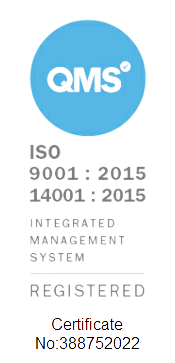There are many reasons that organisations move to the cloud; enhanced security, increased mobility, better data access and improved collaboration to name just a few.
However, you’re not reading this blog to find out why organisations move, you’re reading this blog to find out how organisations move. There are a number of steps involved in any successful cloud migration, but it’s important to realise that the success of this type of project isn’t just down to the migration of data.
A successful move to the cloud is much more than just moving data; it’s an opportunity to transform the way an organisation works; how they interact with data, how they interact with each other and how they enable their teams to work with the best possible tools for the job.
A successful move to the cloud involves true digital transformation, and this is an opportunity not to be missed.
5 Pillars of a successful move to the cloud
- Setting Goals
- Technical Configuration
- Data Migration
- Change Management
- Ongoing Support
1. Setting Goals
At the beginning of a project like this, it’s incredibly important to ensure that there is buy in from senior stakeholders so that you can be sure the project will gain traction and progress as required. After gaining this, the next step is to set some goals for what you’re actually trying to achieve. There are often many ways to do the same thing, but there may well be a particular solution that can tick all the boxes, or you may require some custom integrations for tools you’re currently using.
Mapping out these goals and priorities early on can make a big difference, as you may find that some features/functionality are an absolute necessity from day 1, but others may be suitable to add on day 2, or even on day 3. This allows you to better manage your project plan and your budget. So ask yourself, “What are we really trying to achieve?”.
2. Technical Configuration
Once you have a plan in place, and you know what solutions you’re going to be using, it’s time to set up your cloud environment and ensure that it’s configured correctly for your intended use from day 1.
Given the fast paced development of cloud computing solutions, we always recommend working with a technology partner to ensure an optimum set up. These types of solutions are always evolving with more features and functionality, so it can be very easy to overlook some key aspects which an official partner will be well aware of and can advise you around the best practices.
3. Data Migration
After configuring your new environment, it’s time to get your data moved from your existing system so that you can start utilising all your new functionality! The migration phase of your project can involve any/all of the following:
- Calendar
- Contacts
- Files
This is a crucial step on your journey to the cloud, and one that is vital to get right first time. There are a number of different tools available that can help you migrate, depending on which system you are moving to and from. However, these tools inevitably incur licence fees for each user you need to migrate. Due to this, it is usually more cost effective to work with a technology partner, who will have access to their own tools and can carry out the migration for you. As well as cost effectiveness, you will also be gaining peace of mind, knowing that a team of experts are managing the transfer of your valuable corporate data - ensuring the project’s success, rather than trying to work it all out on your own.
4. Change Management
Having the right tools in place is an excellent start to a digital transformation project, and indeed that of any successful business. Although, it’s not the be-all and end-all. The tools that you put in place will inevitably be useless if your employees do not correctly adopt them and learn how to put them to best use. Many projects don’t see the same levels of success when users try to work in the same ways as they used to, only with shiny new apps instead of their previous programs.
To ensure that your investment is protected (or better yet, maximised), it is vital to put a thorough Change Management program in place. We recommend doing so well in advance of the start of your project, beginning with clear communications to all employees so that they know what to expect. This should go on to include why you are disrupting the way that they work, and more importantly, why it’s going to make their work-life easier.
Following these communications, it’s strongly recommended that users are provided with training on how to best use their new tools, as well as considering the change impacts that they can have on existing workflows. Due to the variety of tools available when working in the cloud, there are often many different ways to achieve similar outcomes, so it’s important to understand what works best for your organisation and establish best practices for users to follow.
5. Ongoing Support in The Cloud
As cloud platforms are always evolving and updating to include new features and functionality, it can be easy to miss some key aspects that might actually be very helpful to your organisation. Because of this, it is strongly recommended to work with a technology partner who can provide support and advice throughout your journey to the cloud and thereafter. They will be able to offer guidance around best practice, 3rd party tools, what new features are coming to the platform, ensuring that users remain engaged with the tools and also provide help-desk support.
Summary
A move to the cloud brings a wealth of benefits to organisations who make the move, and in 2020, there will be more than ever who choose to do so. If the time is right for yours, following the 5 pillars outlined above will ensure you have as seamless a transition as possible, with a trusted technology partner by your side. Pop your email down belore to explore more about how a partner can help!







